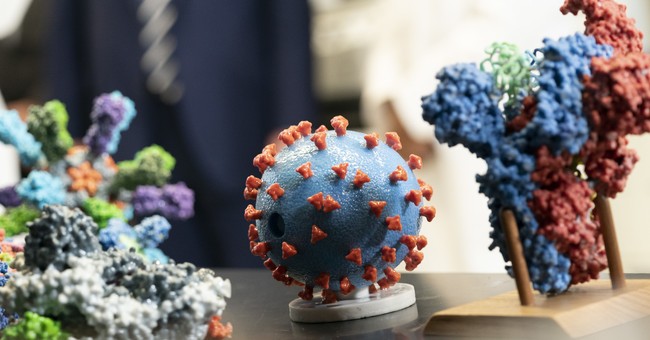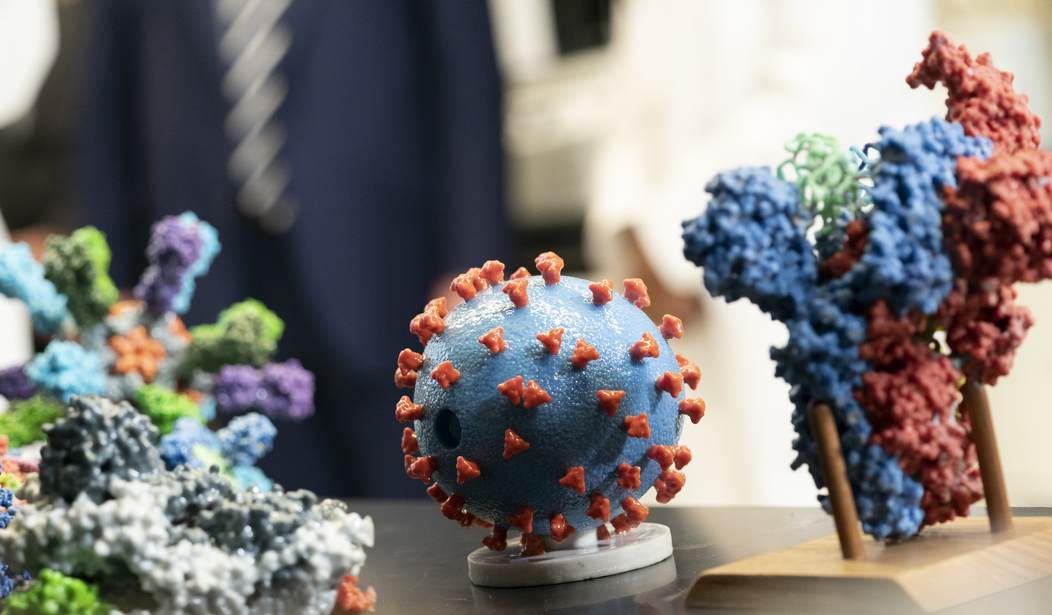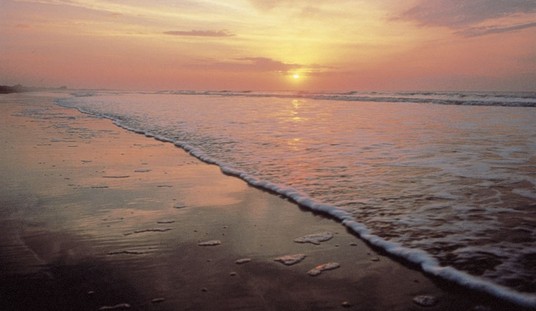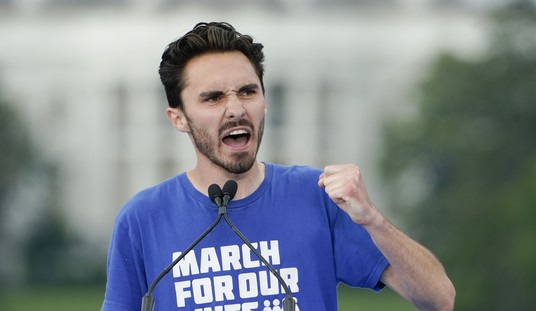
Models of viruses are seen during President Donald J. Trump’s tour of the viral pathogenesis laboratory Tuesday, March 3, 2020, at the National Institutes of Health in Bethesda, Md. (Official White House Photo by Shealah Craighead)
You may recall that President Donald Trump talked about the possibility that the Wuhan coronavirus might lessen as we moved into the warmer weather.
Some mocked that, despite the fact that there was good scientific reason to think that could be the case.
Now there’s more.
From Yahoo News:
Preliminary results from government lab experiments show that the coronavirus does not survive long in high temperatures and high humidity, and is quickly destroyed by sunlight, providing evidence from controlled tests of what scientists believed — but had not yet proved — to be true.
A briefing on the preliminary results, marked for official use only and obtained by Yahoo News, offers hope that summertime may offer conditions less hospitable for the virus, though experts caution it will by no means eliminate, or even necessarily decrease, new cases of COVID-19, the disease caused by the coronavirus. The results, however, do add an important piece of knowledge that the White House’s science advisers have been seeking as they scramble to respond to the spreading pandemic.
The study found that the risk of “transmission from surfaces outdoors is lower during daylight” and under higher temperature and humidity conditions. “Sunlight destroys the virus quickly,” reads the briefing.
Sounds like there may be something to the old expression: “Sunlight is the best disinfectant.” That meant shedding light on a subject. In this case, they may mean it, literally.
“Outdoor daytime environments are lower risk for transmission,” the briefing states.
Simulated sunlight “rapidly killed the virus in aerosols,” the briefing says, while without that treatment, “no significant loss of virus was detected in 60 minutes.”
The results were from a briefing DHS science and technology directorate, describing experiments conducted by the National Biodefense Analysis and Countermeasures Center. DHS told Yahoo not to draw any conclusions since the results were preliminary, but it adds another possible piece to the puzzle to pursue in figuring out how to deal with the virus.
As Yahoo observes, scientists had already predicted that warmer climates might make a difference, since they believed that the virus was spreading more slowly in countries with such climates.
While the new lab results are important, the science behind how sunlight kills the virus is fairly well established, says Arthur Anderson, former director of the Office of Human Use and Ethics at the United States Army Medical Research Institute of Infectious Diseases at Fort Detrick, Md.
“[Ultraviolet] light breaks DNA into fragments. If the virus is floating around in the air and there’s bright sunlight, the UV component in sunlight will break the DNA or the RNA into pieces,” he told Yahoo News.
Dr. Anthony Fauci has also indicated he believes it might lessen in the summer months.
This sounds like some more positive news as we are now moving into the summer months.
But while Trump and Fauci may have had a point, guess who seems to have been off once again?
WHO: "There is no evidence that sunlight kills the new coronavirus." https://t.co/dsuBlOy99F
U.S. National Biodefense Analysis and Countermeasures Center finds: "Sunlight destroys virus quickly" https://t.co/rZppcEE0kx
Another WHO blunder! pic.twitter.com/Kd1oS88eKC
— Jordan Schachtel (@JordanSchachtel) April 17, 2020













Join the conversation as a VIP Member